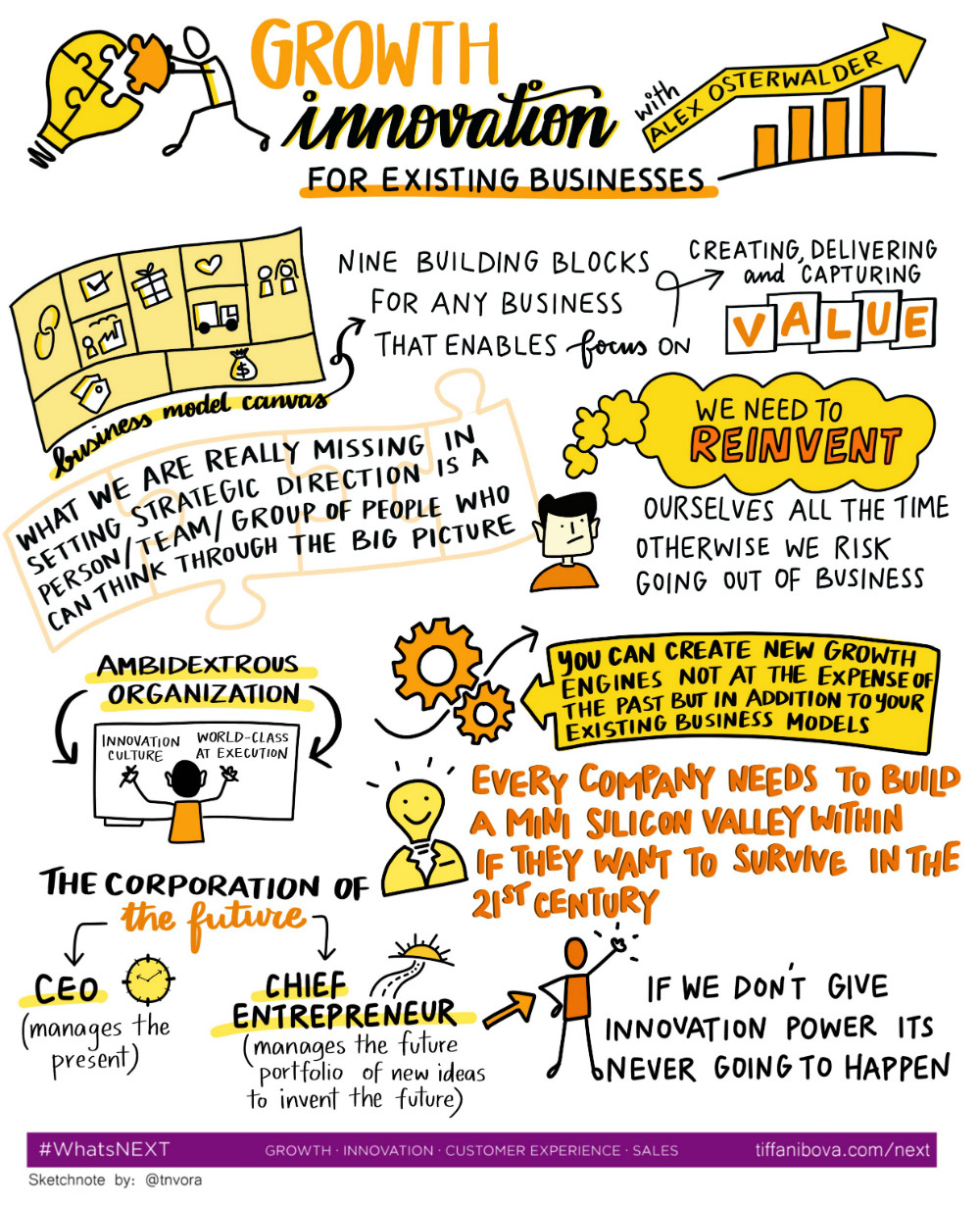Regardless of size, every business has a customer, value proposition, a behind-the-scenes team, and a revenue stream.
Even with relatively simple business models, however, there are challenges. Most people tend to only focus on where they live or what role they play, which is logical but also short-sighted. Every person in the company needs to think “big picture” and know how each piece fits together. It’s the shared vision that mitigates pulling teams in different directions.
It’s not just the present big picture that matters.
In an interview with Alex Osterwalder on my What’s Next! podcast, we discussed how there could be a simple way to describe any business model, including existing models for larger companies and new models for startups.
Alex is the author of Business Model Generation, and his personal mission is to make strategy, innovation, and entrepreneurship simple, practical, and applicable. For him, it all began with his doctoral thesis and applying computer-aided design to business.
According to Alex, C-Suite leaders needs to take the invention of the future seriously.
Alex also believes there should be two executive teams; one that keeps the daily operation going and one that solely focuses on the future business model. The futuristic team assesses which products are obsolete, what needs to be brought in to keep the company fresh, and how to avoid self-destruction in the process.
You might be thinking, “Oh, my company doesn’t need a second team! We would never self-destruct.” Can this be possible?
Yes, if company culture shifts. You have to create a mini-Silicon Valley from within— staying agile, failing fast, and pivoting as necessary.
Leaders should be students of their craft. They must study the changes to the market, master the tools of the trade, and re-learn the portfolio of the industry. That is the only way to remain truly innovative, no matter your industry or company size.

Listen to our conversation and subscribe to the What’s Next! podcast on Apple Podcasts.


